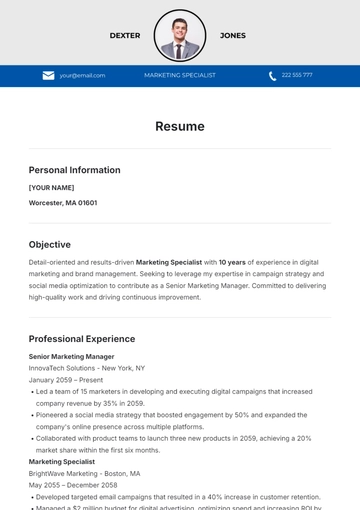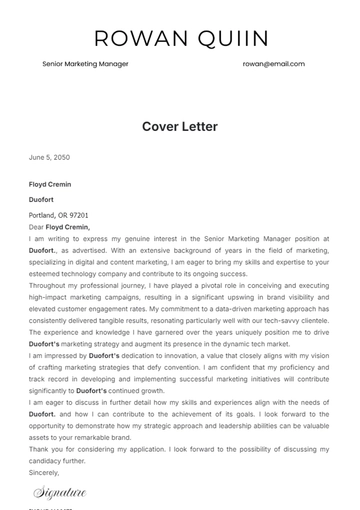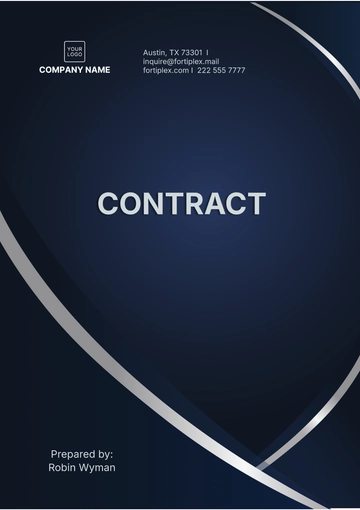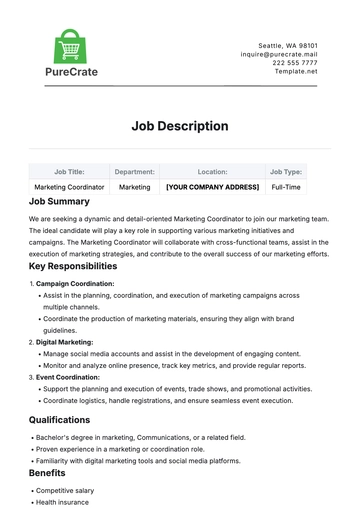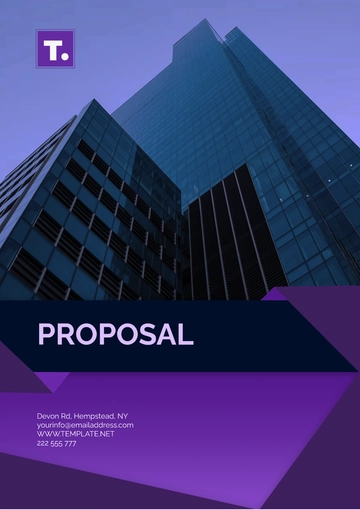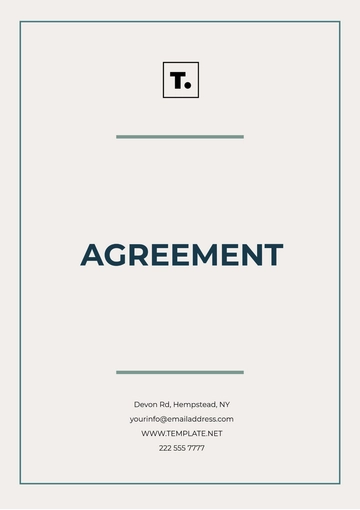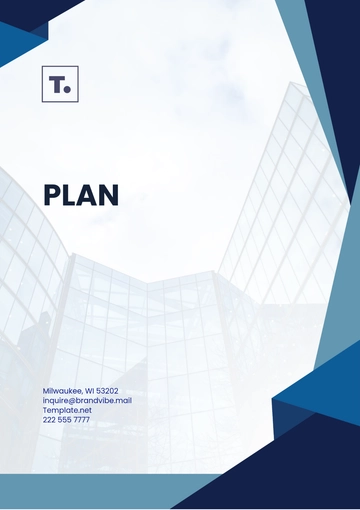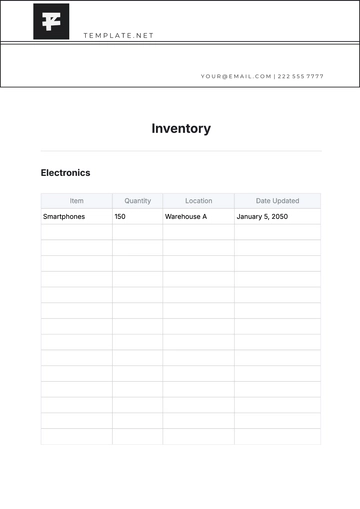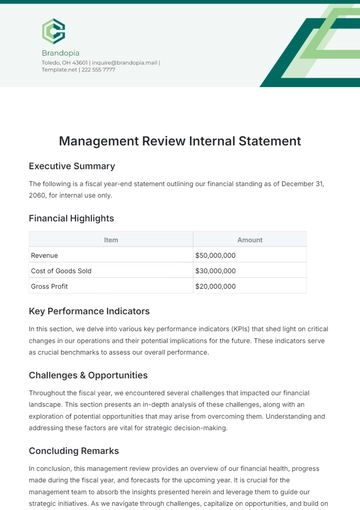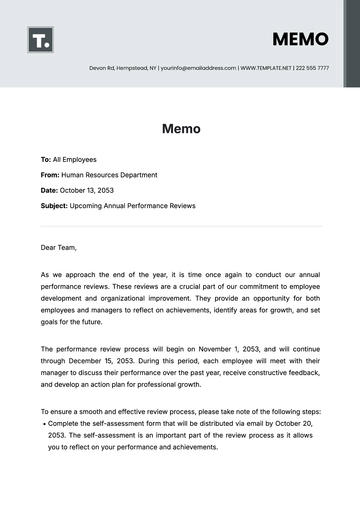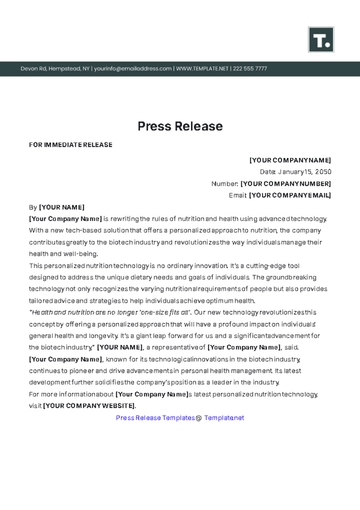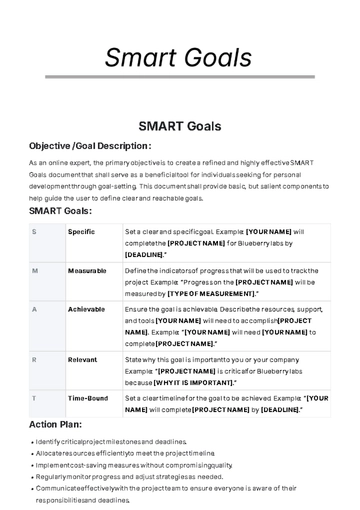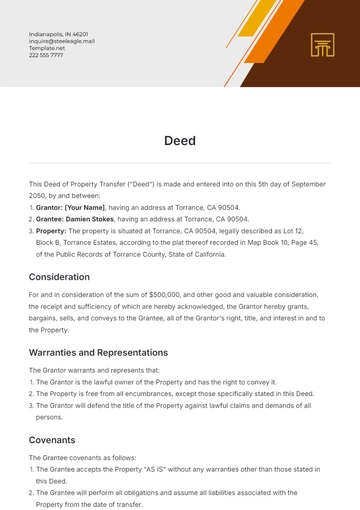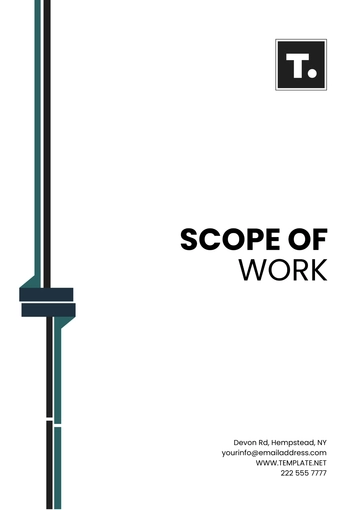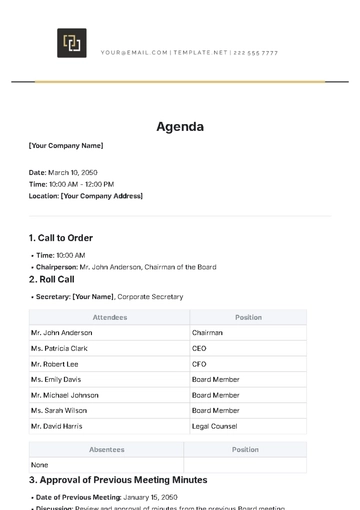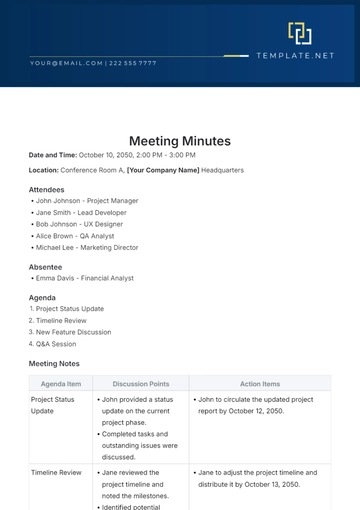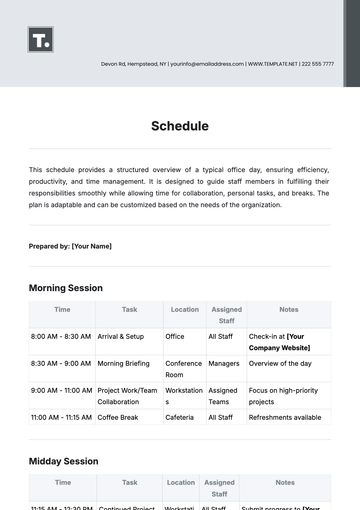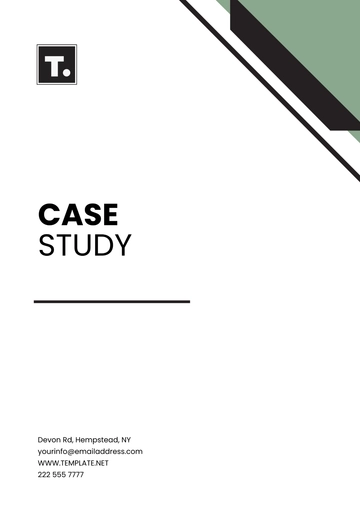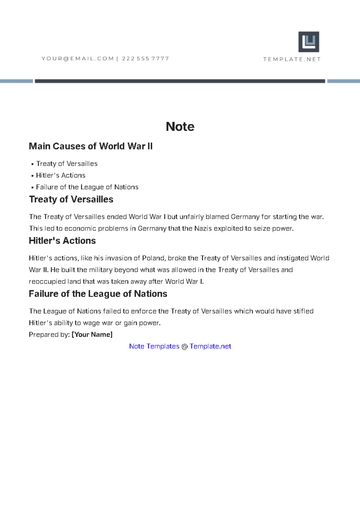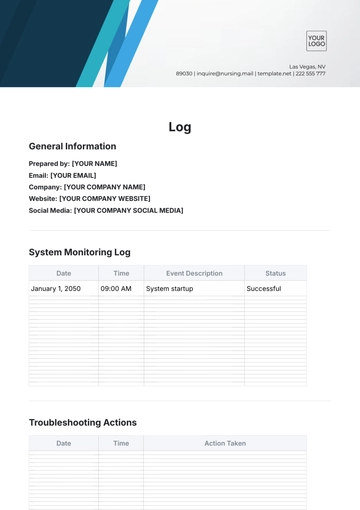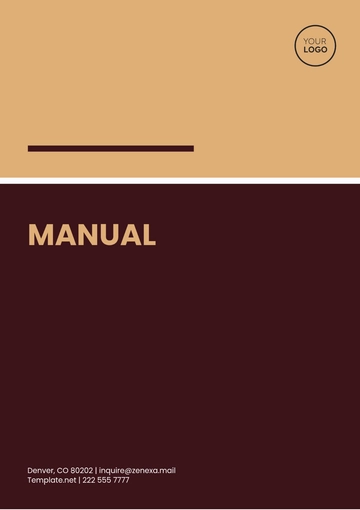Free Event Experience Design Advertising Blueprint
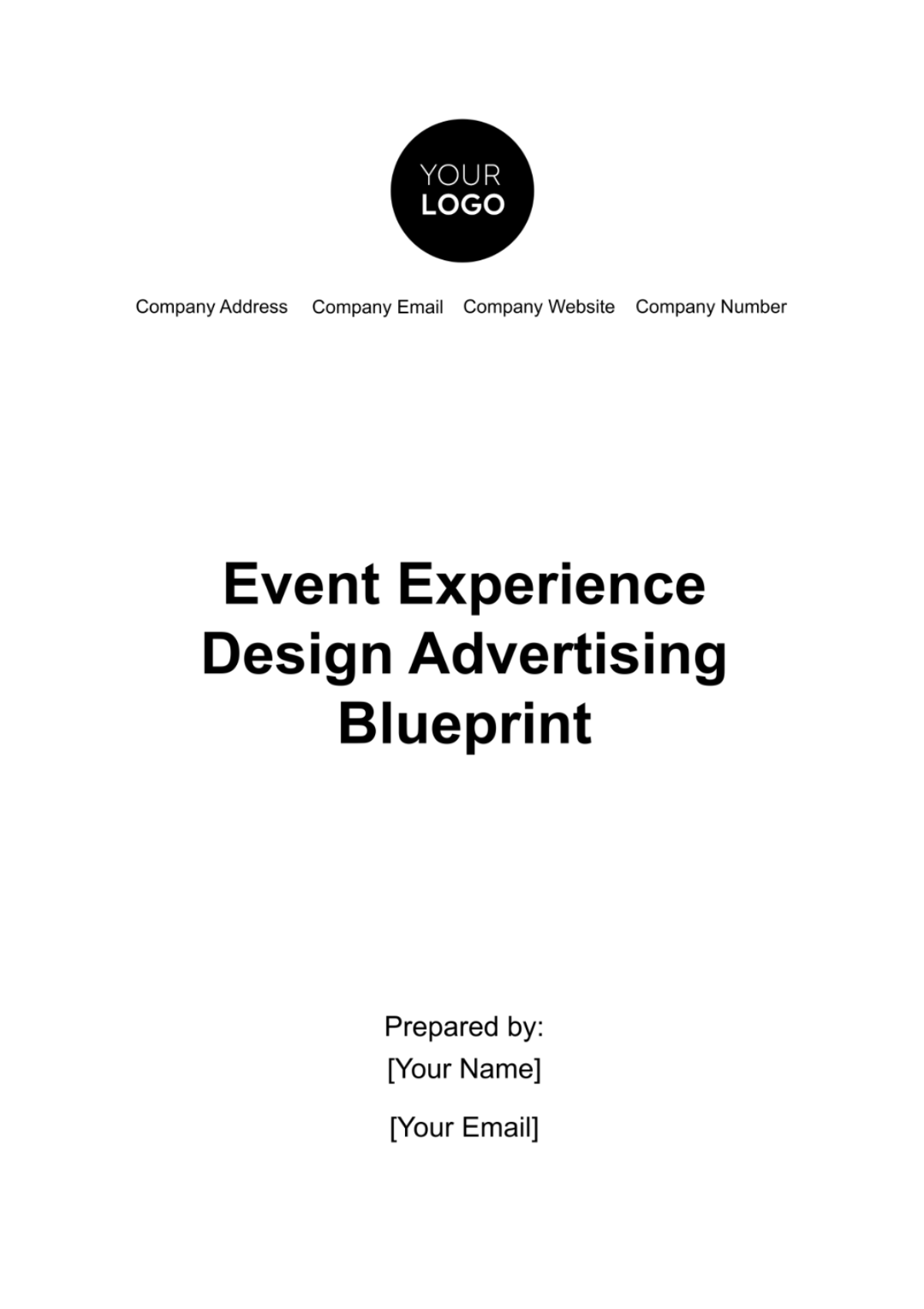
I. Executive Summary
This Event Experience Design Plan outlines the strategic approach for [Your Company Name] to create immersive, engaging, and memorable experiences for clients in the advertising industry. Our goal is to leverage innovative design techniques and cutting-edge technology to elevate brand interactions and foster meaningful connections.
A. Objectives and Goals
Each objective is supported by specific, actionable strategies aimed at realizing these goals:
Achieve a substantial increase in event attendance, aiming for a [50%] growth over the previous year.
Significantly enhance attendee engagement by integrating more dynamic and interactive sessions, as well as fostering robust networking opportunities.
Solidify [Your Company Name]'s position as a pioneering leader in the advertising sector.
II. Event Overview
A. Event Background and Purpose
[Your Company Name]’s [Event Name] provides a platform for thoughtful leaders, innovators, and enthusiasts to exchange ideas and drive the industry forward. The purpose of this event is to foster innovation and facilitate networking.
B. Target Audience
Our target audience includes professionals aged [25-50] in the marketing and advertising sector. The interests vary from high value on digital innovation, creative storytelling, and networking opportunities.
C. Event Theme and Concept
The overarching theme for the [Event Name] is focusing on innovation, creativity, and future trends.. The concept is designed to create a memorable and impactful experience for every participant.
III. Experience Design
A. Event Flow and Timeline
The event will kick off with a seamless registration and check-in process, ensuring attendees are swiftly welcomed. The main activities and sessions are carefully scheduled to maintain a dynamic flow, offering a balance between informative sessions and engaging experiences. Networking opportunities are strategically placed to encourage meaningful connections.
B. Venue Layout and Design
The venue, [Event Venue], will be transformed to reflect the theme. Expect an immersive atmosphere with captivating decor, strategically placed signage, and easy-to-follow wayfinding. The layout has been designed to optimize the flow of participants and enhance their overall experience.
C. Engagement Strategies
We've incorporated interactive elements throughout the event, from live polls during presentations to hands-on demonstrations in dedicated experience zones. Attendee participation is a priority, fostering a sense of involvement and community.
D. Technology Integration
The event app, [App Name], will serve as a central hub for participants. It will feature real-time updates, interactive maps, and networking tools. Audio-visual enhancements, including dynamic stage setups and immersive displays, will elevate the overall technological experience.
IV. Advertising Strategy
A. Target Audience Analysis
Understanding our audience is key. Our primary demographic includes professionals, and our psychographic analysis reveals a shared interest in innovation, creativity, and future trends. This knowledge informs our advertising strategy, ensuring messages resonate effectively.
B. Branding and Messaging
The event logo, color palette, and visual identity have been carefully crafted to align with our theme and convey our brand essence. Ensuring consistent branding throughout the event, using visually striking designs and clear messaging that reflects [Your Company Name]'s identity.
C. Advertising Channels
Social Media Campaigns: Utilizing a blend of engaging, creative content across multiple platforms tailored to each platform's unique audience and strengths. This includes:
a. Advanced Targeted Advertising: Implementing ad targeting based on demographics, interests, and past engagement to maximize reach and impact.
b. Organic Engagement Enhancement: Encouraging user-generated content, influencer collaborations, and active community management to boost organic reach and interaction.
Email Marketing:
a. Personalized Communication: Crafting personalized email campaigns for different segments of the audience, from potential attendees to confirmed participants.
b. Engagement-Driven Content: Including interactive elements like polls, event teasers, or sneak peeks in emails to maintain interest and excitement.
c. Analytics-Driven Strategies: Employing advanced email analytics to track open rates, click-through rates, and conversion rates, refining the approach based on performance data.
D. Collaborations and Partnerships
Strategic partnerships with major companies and high-profile figures to strengthen our reach. This will greatly amplify our message across diverse audiences.
V. Creative Elements
A. Visual Assets
Graphic design concepts ensure a visually striking and cohesive presentation. Photography and videography plans outline the capture of key moments and interviews for post-event promotion.
B. Copywriting and Content
Website content will be concise, informative, and SEO-optimized. Social media copy will leverage a consistent tone, reinforcing our key messages and encouraging audience engagement.
VI. Budget and Resources
A. Budget Allocation
Our financial plan is strategically designed to optimize every aspect of the event, ensuring a balance between impactful advertising and a memorable experience:
Advertising Costs:
Social Media Campaigns: Allocating [$25,000] for targeted ads, sponsored posts, and influencer collaborations across [list social media platforms].
Email Marketing: Reserving [$10,000] for personalized email campaigns, newsletters, and promotional content.
Traditional Media: Allotting [$5,000] for print, radio, and television advertisements to reach a broader audience.
Experience Design Expenses:
Venue: [$25,000] is dedicated to securing the venue, ensuring a dynamic and accessible space.
Decor and Theming: [$10,000] is set aside for transforming the venue into an immersive environment that aligns with the event theme.
Technology Integration: [$15,000] is budgeted for advanced audio-visual equipment, event app development, and interactive technology.
Miscellaneous: An additional [$20,000] is reserved for unforeseen expenses and last-minute adjustments.
B. Resource Requirements
The success of our event relies on a dedicated team of professionals and strategic partnerships:
In-House Team:
Event Manager: Responsible for high-level strategic planning, overseeing all aspects of event planning and execution. Acts as the primary liaison with key stakeholders and ensures alignment with [Your Company Name]'s vision.
Marketing Specialist: Focuses on omnichannel advertising strategies, including digital campaigns, social media engagement, and analytics. Collaborates with media partners and influencers to maximize reach and impact.
Experience Designer: Specializes in crafting immersive, interactive environments, integrating cutting-edge technology with aesthetic design elements to create memorable event experiences.
Project Manager: Manages project timelines, resource allocation, and interdepartmental coordination. Implements agile methodologies to ensure flexibility and efficiency in meeting project goals.
External Vendors:
AV Support: Provides not just technical support but also contributes to the creative use of audio-visual technology, ensuring high-quality presentations and interactive experiences.
Catering: Offers a curated selection of cuisine that aligns with the event theme and attendee preferences, including options for dietary restrictions and sustainable, locally-sourced ingredients.
Event App Developer: This team is responsible for integrating real-time analytics, personalized attendee experiences, and seamless integration with event activities.
VII. Implementation Timeline
A. Milestones and Deadlines
Date | Activity |
[Month Day, Year] | Finalize the design concepts. |
B. Coordination and Communication Plan
Regular team meetings, supported by the company’s message app, will ensure seamless coordination. A detailed communication plan will keep all stakeholders informed and engaged.
VIII. Metrics and Evaluation
A. Key Performance Indicators (KPIs)
Attendance Numbers: Achieving a substantial [50%] increase in attendance compared to the previous event. We will be using demographic analysis of attendees to understand reach across various sectors and regions.
Engagement Metrics: Monitoring social media interactions, app usage, and session participation. We will be tracking likes, shares, comments, and hashtag usage to gauge digital engagement.
Return on Investment (ROI): Evaluating the success of advertising efforts. We will be measuring ticket sales, sponsorships, and other revenue streams against event costs.
B. Data Collection and Analysis Methods
Utilizing the company’s analytics tools, we will collect and analyze data in real-time, allowing for agile adjustments to our strategy based on attendee behavior and preferences.
C. Post-Event Surveys and Feedback
Post-event surveys will be distributed to gather participant feedback on the overall experience, content, and areas for improvement.
IX. Contingency Plans
A. Risk Assessment
a. Technological Failures: Recognizing the potential for technical glitches in AV equipment, network connectivity, or event app functionality.
b. Regulatory Changes: Anticipating shifts in local, state, or federal regulations that could impact event logistics, such as health and safety protocols.
c. External Disruptions: Preparing for unpredictable factors like extreme weather, transportation strikes, or geopolitical events.
B. Mitigation Strategies
Mitigation strategies include:
Advanced Technical Support System: Establishing a dedicated technical response team equipped with backup systems and rapid troubleshooting protocols.
Regulatory Compliance Mechanism: Developing adaptable event structures to quickly respond to new regulations, including hybrid or virtual alternatives.
Weather and External Disruption Preparedness: Implementing an efficient system to notify attendees of any changes or precautions related to weather or other disruptions.
X. Conclusion
This Event Experience Design Advertising Blueprint has detailed the roadmap to an extraordinary event. The immersive experience design and targeted advertising endeavors to create an indelible impact on every attendee. From the captivating visuals and engaging activities to the strategic messaging across diverse channels, each element is meticulously planned to resonate with our audience and elevate our brand.
- 100% Customizable, free editor
- Access 1 Million+ Templates, photo’s & graphics
- Download or share as a template
- Click and replace photos, graphics, text, backgrounds
- Resize, crop, AI write & more
- Access advanced editor
Introducing Template.net's Event Experience Design Advertising Blueprint Template, revolutionizing event promotion strategies. This customizable template, editable in our Ai Editor Tool, empowers businesses to craft captivating advertising plans. Tailor your campaigns to perfection, ensuring maximum engagement and impact. Simplify the process of designing memorable event experiences with our user-friendly platform, elevating your brand's presence and success.
You may also like
Free
Free CV Template
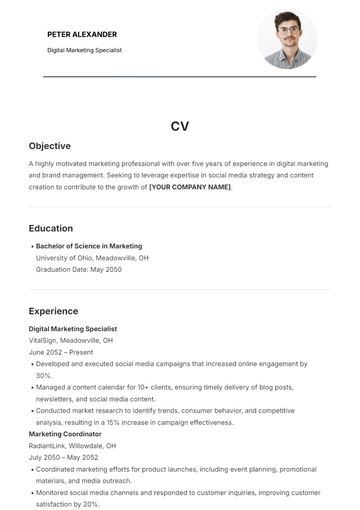
- Resume
- Cover Letter
- Report
- Budget
- Lesson Plan
- Itinerary
- Resignation Letter
- Letter
- Job Description
- To Do List
- CV
- Proposal
- Business Plan
- Checklist
- List
- Smart Goal
- Executive Summary
- Agenda
- Analysis
- Press Release
- Memo
- Note
- Action Plans
- Script
- Essay
- Brief
- Syllabus
- Tracker
- Contract
- Agreement
- Bill of Sale
- Case Study
- White Paper
- Statement
- Will
- Deed
- Notice
- Scope of Work
